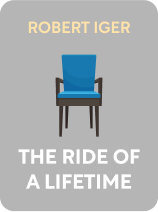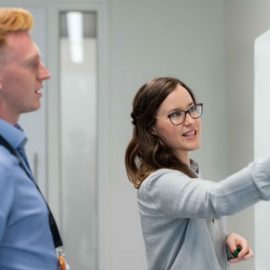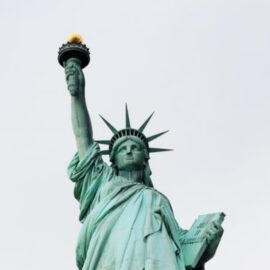

This article is an excerpt from the Shortform book guide to "The Ride of a Lifetime" by Bob Iger. Shortform has the world's best summaries and analyses of books you should be reading.
Like this article? Sign up for a free trial here .
How did things change after Disney bought ABC? Why did Mike Ovitz fail as president of Disney?
In his memoir The Ride of a Lifetime, Bob Iger talks about the struggles he went through when Disney bought ABC. Iger should have been first in line to become Disney’s new president, but Disney’s CEO Michael Eisner gave the position to his friend, Mike Ovitz instead.
Keep reading to learn about how Disney bought ABC and Bob Iger was shoved to the side due to nepotism.
How Disney Bought ABC
In spring 1995, soon after Bob Iger became COO of Capital Cities/ABC, Disney made clear it wanted to acquire the company. Michael Eisner, who had been Disney CEO since 1984, led the charge.
What motivated the acquisition?
- Despite being one of America’s most storied brands, Disney was also feeling the pressure of a changing media industry. Fierce competition in entertainment was driving smaller companies to be acquired, like Time Inc.’s purchase of Warner and Viacom’s purchase of Paramount. If Disney wanted to remain independent, it would need to become larger.
- Furthermore, Disney was entering a creative funk. While the late ‘80s and early ‘90s saw smash hits like Aladdin and The Lion King, the mid-90s saw commercially lackluster films like Atlantis, Fantasia 2000, and Tarzan.
If Disney bought ABC, it would expand its reach to audiences through ABC’s many media properties, including ABC, television stations, ESPN, cable channels, newspapers, and magazines. Better yet, the businesses were run profitably, giving Disney a financial boost and allowing it to weather the more hit-driven entertainment business. And in return, Disney would benefit ABC with its famed creative forces and perennially in-demand content.
Negotiating His Deal
Former Disney CEO Bob Iger notes that much has already been written about why Disney bought ABC, so in his memoir The Ride of a Lifetime, he focuses on his personal experience.
Iger wasn’t completely thrilled about the deal. On a personal level, he was in New York, and the job would likely require moving back to Los Angeles. His first marriage had ended, and his new fiancee Willow Bay was a TV host in New York. New York also had his daughters and his aging parents.
On the other hand, this was yet another opportunity to rise and gain experience. Michael Eisner made clear that he wanted Bob Iger as part of the deal; this suggested Eisner knew he needed help running the newly combined massive company, especially ABC/Capital Cities’ sprawling properties. Furthermore, Iger couldn’t help dreaming about possibly one day running Disney.
To negotiate on his behalf, Iger hired a lawyer. Iger wanted to be as close to the top as possible, ideally reporting directly to Eisner and possibly eventually being named second-in-command. Eisner refused, stating he wanted the freedom to name someone else as president, and that Iger would report to that person.
Ultimately, Iger agreed to a five-year contract as head of Disney media. The deal closed in February 1996 and Disney bought ABC/Capital Cities for $19.5 billion
Adjusting to the Company
To most of Disney and ABC, the acquisition was a complete surprise, and people immediately started wondering how the two companies would work together. In speaking to Capital Cities/ABC executives, Iger was clear that there would be cultural clashes—where ABC had spent years under Tom and Dan becoming humble and embodying classic good values, Disney was aggressive, creative, and deeply rooted in Hollywood.
For example, Tom and Dan had always run Capital Cities/ABC with decentralization. They had a meager corporate headquarters, instead trusting the individual business units to make the best decisions for themselves and the company. In contrast, Disney was a completely centralized company; all major decisions had to be run through the “Strategic Planning” group.
“Strat Planning” consisted of MBAs who provided data and analyses of Disney’s major decisions, giving the CEO Michael Eisner peace of mind. But people in Strat Planning knew their lofty position and acted like schoolyard bullies, speaking abrasively and shutting projects down by fiat.
Iger felt this setup constrained the company’s entrepreneurial forces. For example, ABC heard a pitch for a new fashion/lifestyle magazine appealing to younger women called Jane. Iger liked reaching a new demographic and gave it the green light. In response, Strat Planning admonished him, saying all businesses needed to run major decisions through Strat Planning, and Iger didn’t have permission to greenlight projects on his own. When Disney bought ABC, ABC lost their freedom.
The Rise and Fall of Mike Ovitz
During negotiations, Eisner wanted to retain the ability to choose a president, and it soon became clear why—a month after the deal closed, Eisner named his friend Mike Ovitz as president.
Mike Ovitz was a super-agent in Hollywood who co-founded Creative Artists Agency (CAA), one of the largest talent agencies in the world. He was now looking for a new role in Hollywood; he’d tried to become head of Universal Studios but failed. Now as president of Disney, Mike Ovitz would be Iger’s boss, but unlike being COO, he wouldn’t be seen as Eisner’s direct successor.
Unfortunately, Mike Ovitz was a bad fit for the role. Disney needed a president to operate its many complicated businesses. The role needed a detailed understanding of television ratings, broadcasting rights negotiations, and talent deals. It also needed someone comfortable with the centralized structure of Disney.
Ovitz was the opposite of this. Still an agent at heart, he was most interested in creating new ideas, especially lucrative deals for his agency’s clients. He had little interest in the operational business details, often refusing to brief himself on important decisions and rendering instant opinions. He still treated his former clients as top priorities, interrupting Disney meetings to talk to his celebrity pals like Tom Cruise and Martin Scorsese.
Furthermore, having enjoyed decades of being the head of CAA, he was used to people treating his ideas as golden and racing to make them real. At Disney, his ideas were treated with lukewarm interest, most of all by Eisner.
Over the months, Disney knew Mike Ovitz was failing, and Ovitz knew he was being ignored at Disney. He reacted poorly and publicly, taking a visible disinterest at senior management meetings, even when Eisner was presenting the company’s strategies. The dysfunction became clear and ruined morale from the top down. Disney executives started threatening to quit.
Finally, 14 months after being appointed president, Ovitz was fired by Eisner in December 1996. For his time, Ovitz received a severance package worth over $100 million (which later became subject to a shareholder lawsuit).

———End of Preview———
Like what you just read? Read the rest of the world's best book summary and analysis of Bob Iger's "The Ride of a Lifetime" at Shortform .
Here's what you'll find in our full The Ride of a Lifetime summary :
- How Bob Iger went from television crew member to CEO of Disney
- The 10 major principles behind Iger's management style and success
- How Iger resuscitated Disney Animation by buying Pixar






